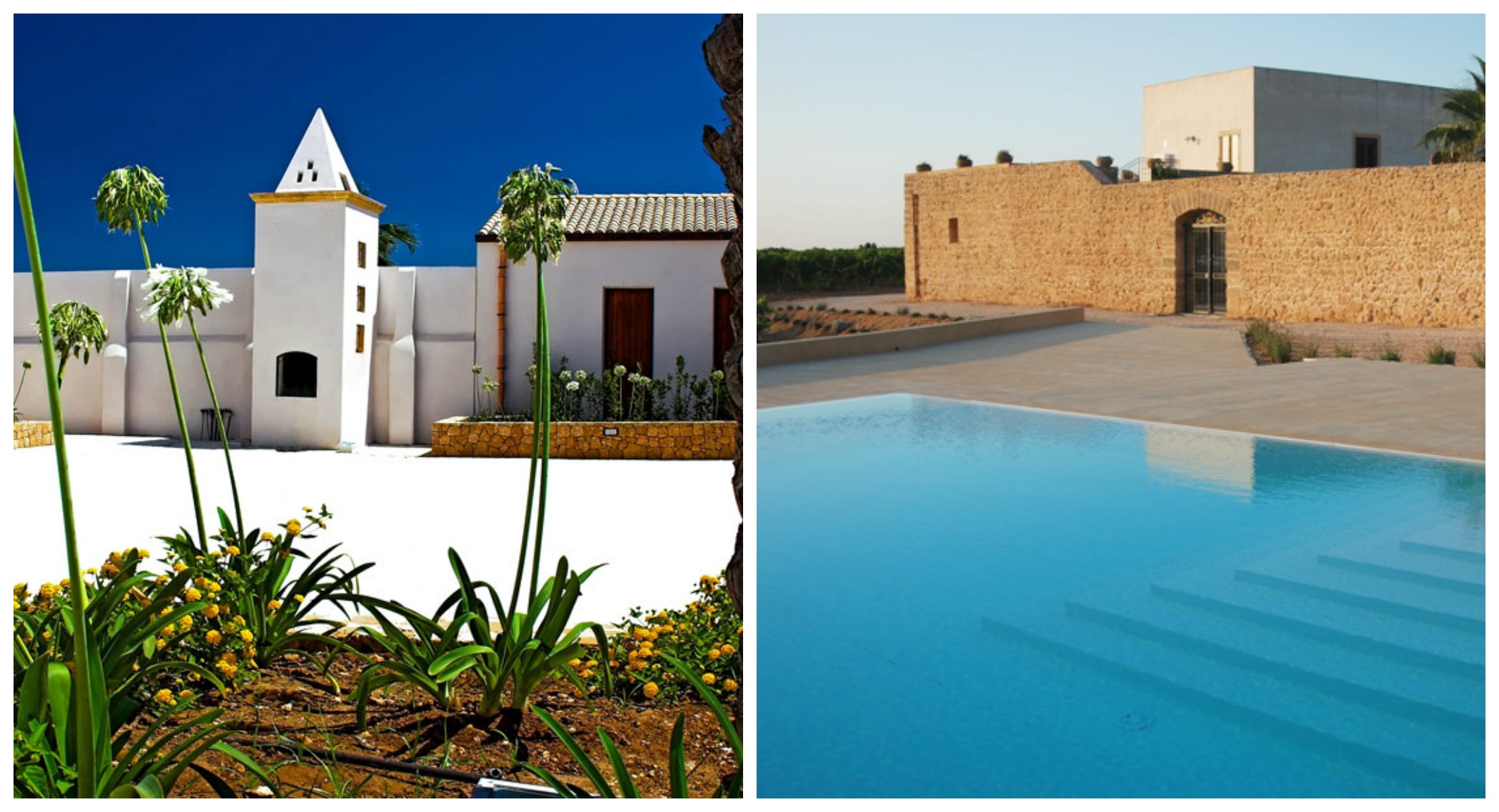Please tell us a bit about your property, the region, its history, the people behind it.
Baglio Donnafranca is a beautiful wine resort located at the heart of the “Strada del vino e dei Sapori del Marsala”, one of the most prestigious wine production areas in the world. Here, the history in winemaking started 3000 years ago with the Phoenicians and continued for centuries till 1773, when John Woodhouse discovered the famous Marsala wine. The Florio’s family built the estate in the 19th century and it was used mainly as a warehouse for their wine farm. After the World War II, it was sold and it became a ruin. The Ansaldi’s family bought the property in 2000 and restored it.
The farmhouse is now the heart of a historic wine estate with 15 rooms, a restaurant where the food is strictly connected with its territory, and a winery. The Baglio is piece of a story that has been completely forgotten for a long time and our task is to discover a culture made by poor people that love their job, their country and their products in order to attach the necessary importance to the traditional values and the sense of our identity.
Baglio Donnafranca’s winery is the part of the building where the cultivation of grapes, production process, bottling and wine tastings can be experienced in the same environment. This is the “heart” of the Relais, where our guests can admire the modern and efficient machinery as well as the wine cellar where the oak barrels reside.
Which are the 3 main features that make Baglio Donna Franca stand out?
In our opinion, the 3 main features that make Baglio Donnafranca stand out are:
- The cultural, architectural and historical uniqueness due to its cultural heritage and for the recovering of 3000 years of history in viticulture
- The care and the dedication for discovering the traditional values connected with our territory and our culture
- The sense of identity and of the importance of the family as an important feature to connect the past with our organic wines and our activity.
Tell us about your winemaking. Who is the winemaker and what approach do you take with your wines
The winery is The winery is led by the owner himself, Giacomo Ansaldi that is not only a well-known enologist, but also a researcher of the Sicilian history in winemaking and of the Sicilian identity. As a result of his activity, he published the work “Identità e ricchezza del vigneto Sicilia” and presented it at Milano Expo 2015. He’s the person that takes care of the vineyards employed for the production of four organic wines mixing the legacy of the past and the new technologies. He prefers a natural approach with his wines. He adopts a vinification technique with respect of the grapes variety and features (varietal winemaking). Tell us a bit about your wines and the Critic Scores press reviews you have received recently
Tell us a bit about your wines and the Critic Scores press reviews you have received recently
At Baglio Donnafranca (Ansaldi winery) we produce 4 organic wines
- Two Grand cru: Abbadessa (white wine) and Cipponeri (red wine)
- Two Premiere cru: Bianco dell’Abbadessa (white wine) and Rosso di Cipponeri (red wine)
- We produce also a sweet wine called Lo Zucco that is 90% Moscato Bianco and it’s a late harvest. The name “Lo Zucco” carries an enormous story behind it. In fact, the story is so long, and it refers to the Duke of Aumale. A film on this subject matter was recently released by director Lidia Rizzo.
What should travellers expect when they visit Baglio Donna Franca?
When our guests arrive at Baglio Donnafranca they can live in a complex setting that mixes culture, history, architecture, food, native grape varieties and a great passion for our activity. They can live their experience taking part in all the activities like on a trip through centuries of history not only in winemaking.

Everyday there is the opportunity for our guests to visit the winery during a guided tour where they can see the machinery, the steel tanks, the French oak barrels and taste the symbol of the winemaking in Sicily: the Perpetual wine.
Almost all of our visitors are interested in wine. They appreciate the quality of the wine and, above all, they can see where the grapes are cultivated, can see where the wine is produced and they can drink it in the same place. They know where the wine comes from.